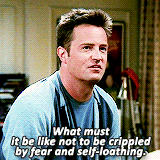I am tagged in 1,698 photos on Facebook.
This includes pictures from every formal, informal, fraternity party, sporting event, cookout or any occasion that involved wearing a dress in the past… well, six years. How many of these pictures do I have printed? A handful. Like a lot of college girls I know, I do a big print out at my local Walgreens before every school year starts so I have something to pin to the bare walls of my new room at DePauw. And then at the end of the year, punched with holes and creased from nine months of dust-collecting, they find their way into the trash. Today, everyone has an iPhone, or at least a smart phone. It’s undeniable that smart phones have changed photography culture dramatically. They have made photography and photo editing accessible to the average person in a whole new way. They have captured beautiful moments and made them shareable. They have, in short, done a lot of good. But when we take all of our pictures with a phone, what are we missing?
Our parents have albums from special occasions, developed from film and carefully framed or taped in books because pictures used to be special. On the other hand, we are bombarded with images of everything we do with everyone we know—but what do we do with them? When our phone contract runs out, our thousands of pictures are left stored in their old host, replaced by its shiny new cousin. Or at best, we put them in a folder on the computer. And if the computer crashes or the phone gets dropped on a tile floor, crack. There goes a year of our lives.
Now, the iPhone has an excellent camera…for a phone. But printed iPhone pictures are grainy, and their unusual dimensions can’t include a whole scene. Printing iPhone photos often leaves subjects with their heads cut off. I’ve been studying photography for four years, and even though I use my iPhone camera every day, I firmly believe that there are some moments, some people, some places that an iPhone can’t do justice. So what’s better? Having thousands of photos of ourselves that never make it past Instagram, or having a real camera and capturing special occasions, but missing the parts of our daily lives that make us who we are?
It’s not fair to expect everyone to buy a DSLR, to learn how to adjust depth of field or what ISO means. Big cameras can be intimidating and bulky in the face of their pocket-sized, multitasking counterparts. My brothers and I have been blessed with an album for each year of our lives until middle school—until cell phone cameras became a thing. The photos from the following years are stored in clusters on Facebook and Instagram, but I can’t hold them in my hands, run my fingers over their shiny finishes, or read their stories. I don’t want to log on to my Facebook to show my future children what life was like in 2014. So when you print your latest batch of selfies and they come out looking less perfect than the moment you remember, maybe you’ll consider a real camera or a scrapbook for your next birthday. Because Facebook won’t be forever.








































